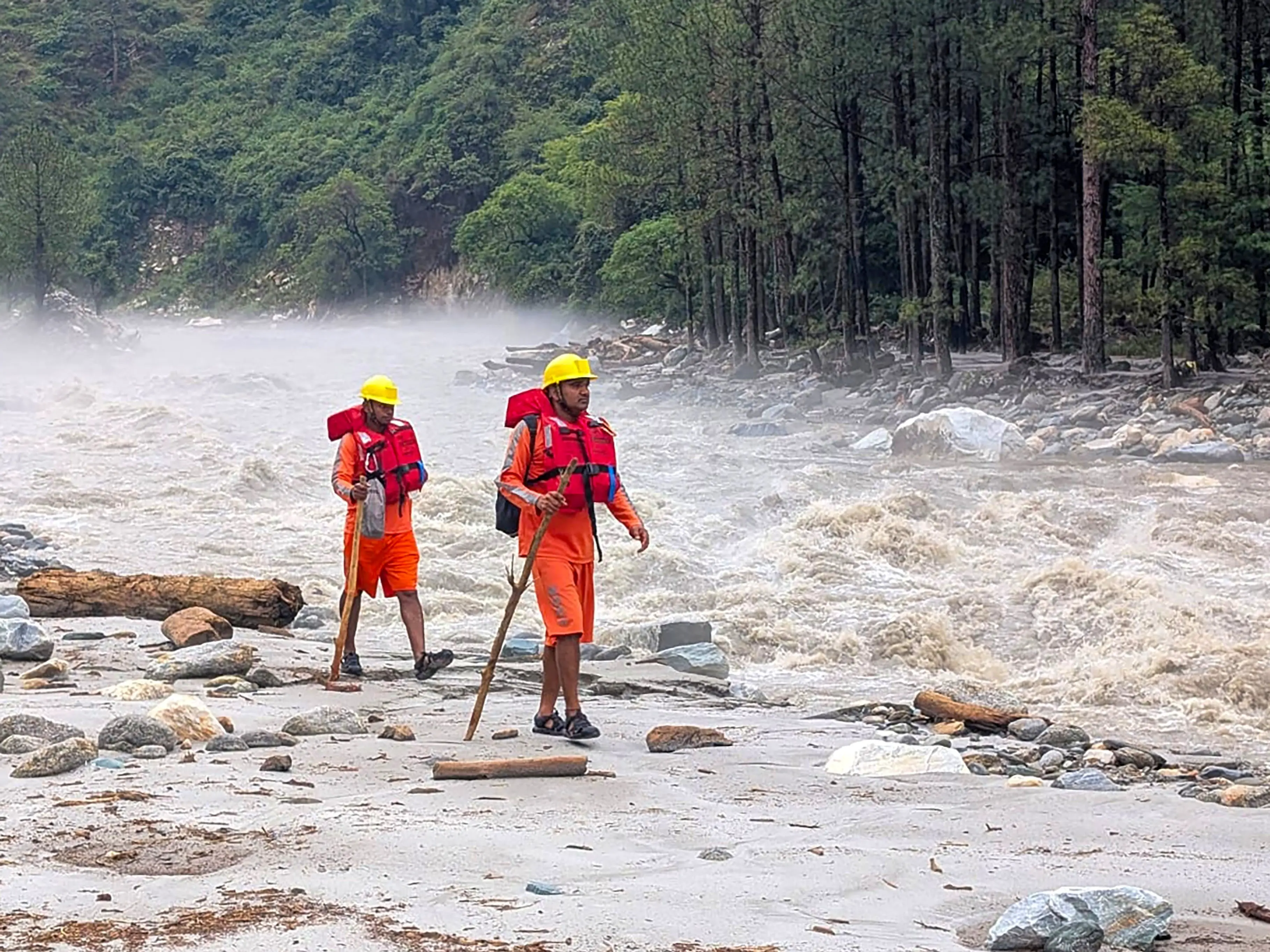The Monsoon Forests Are Dying—and No One Is Talking About It: For centuries, India’s tropical deciduous forests—popularly known as monsoon forests—have stood as green sentinels across the subcontinent, shedding their leaves with the dry winds and blooming back to life with the first drops of rain. But beneath the familiar rhythms of nature, a silent crisis is unfolding. These forests, which once covered vast stretches of the country, are shrinking, degrading, and in many places, vanishing altogether. According to the 2025 forest survey, more than 90% of dry deciduous zones are now under severe ecological stress, and the situation is only worsening. Yet, this slow death of India’s most widespread forest type is happening with alarmingly little public attention. What’s causing this decline—and why should we care? The answers lie in the roots of our environment, economy, and future.
Tropical Deciduous Forests in India: The Pulse of the Monsoon Ecosystem
Tropical deciduous forests, commonly referred to as monsoon forests, are the most widespread type of forest cover in India. These forests thrive in regions that experience distinct wet and dry seasons and receive between 70 cm and 200 cm of annual rainfall. They represent the dynamic heartbeat of India’s natural landscape—supporting wildlife, absorbing carbon, and serving as the backbone for rural livelihoods.
What Are Tropical Deciduous Forests?
These forests are specially adapted to India’s monsoon-driven climate. During the dry season, typically lasting several months, trees shed their leaves to conserve moisture. As the monsoon returns, the canopy regenerates in lush green, creating a vibrant and productive environment.
The forests are stratified into multiple layers. The upper canopy often consists of trees such as teak (Tectona grandis), sal (Shorea robusta), and axlewood (Anogeissus latifolia). The middle and lower layers host species like bamboo, flame-of-the-forest (Butea monosperma), tendu, and a variety of shrubs, herbs, and grasses.
These forests play a dual role: they are ecological reservoirs of biodiversity and sources of economic sustenance, especially for forest-dependent communities.
Ecological and Economic Importance
Tropical deciduous forests are essential for climate regulation, biodiversity conservation, and economic well-being. They serve as significant carbon sinks, with studies in India estimating that well-preserved deciduous forests can store up to 58 megagrams of carbon per hectare.
These forests also support a wide array of wildlife, including Bengal tigers, Indian elephants, sloth bears, leopards, wild boars, and a variety of bird and reptile species. They provide crucial ecological services such as maintaining soil fertility, regulating water cycles, and protecting watersheds.
Economically, they are vital to rural communities. The forests supply timber, fuelwood, fodder, honey, fruits, medicinal herbs, and other non-timber forest produce. Tendu leaves used in bidi-making and mahua flowers for oil and liquor are key sources of income in many tribal regions.
6. Key Locations List
| Region | State(s) | Notes |
|---|---|---|
| Chota Nagpur Plateau | Jharkhand, Odisha, etc. | Dry deciduous; sal‑dominated; major wildlife refugees en.wikipedia.org+2en.wikipedia.org+2en.wikipedia.org+2 |
| Narmada Valley | MP, Chhattisgarh, etc. | Teak‑heavy forests; ecoregion critical/endangered |
| Bannerghatta NP | Karnataka | 44% loss over 26 years |
| Melagiri Hills | Tamil Nadu | Key corridor linking to BR Hills, Cauvery |
| Odisha Forest Ranges | Odisha | High plant diversity, sal dominance |
| Mudumalai NP | Tamil Nadu | Mixed moist–dry deciduous, teak‑axlewood |
| Assam Reserves | Assam | Encroached areas, degrading primary forests |
Major Regions Where These Forests Occur
Tropical deciduous forests dominate the following areas across India:
-
Chota Nagpur Plateau (Jharkhand, Odisha, Bihar, West Bengal, Chhattisgarh): These forests are rich in sal, bamboo, and mahua. They support major wildlife corridors and protected areas.
-
Narmada Valley (Madhya Pradesh, Maharashtra, Chhattisgarh): Characterized by teak forests and mixed deciduous patches, this region provides critical ecological balance between central India’s hills and plains.
-
Eastern Odisha: Sal forests are prominent in this belt, accompanied by high plant species diversity and dense forest canopies in select zones.
-
Mudumalai and Melagiri Hills (Tamil Nadu and Karnataka): Home to dry and moist deciduous species, these areas are vital for elephant and tiger movement and contain ancient forest tracts.
-
Bannerghatta National Park Region (Karnataka): This zone, previously a dense deciduous forest, has seen significant urban pressure and habitat fragmentation in recent decades.
-
Parts of Assam and Northeastern Hills: Though dominated by tropical rainforests, dry deciduous patches exist in relatively rain-shadowed areas, adding to regional diversity.
Forest Report 2025: Recent Trends and Observations
According to India’s State of Forests Report 2025, forest cover trends show a complex picture. While some states have recorded gains, the quality of forest cover—particularly natural forests—has been under stress.
-
Climate Vulnerability: In 2025, nearly 64% of India’s forest area is projected to be at risk due to climate change. This includes increases in temperature, prolonged droughts, and erratic monsoon patterns.
-
Dry Deciduous Forests Under Stress: Over 95% of the tropical dry deciduous forest zone is expected to be under high or very high vulnerability by 2050 if current trends continue. These forests are especially sensitive to moisture loss and fire risk.
-
Net Forest Cover Change (2023–2025): India added a marginal gain of 2,400 sq km of forest and tree cover, but this was offset by the loss of natural dense forests in critical zones, especially around urban edges and infrastructure projects.
-
Shrinking Regions:
-
Karnataka (Bannerghatta zone): Continued urban sprawl and encroachment led to over 45% decline in dense deciduous forest cover since the mid-1990s.
-
Assam and Northeast: High deforestation rates due to shifting cultivation and forest fires, with nearly 350,000 hectares of humid primary forests lost in the last decade.
-
Punjab: The state recorded a decline from 4.8% to 3.6% in total forest area over 20 years, largely due to conversion of forest land to agriculture and settlements.
-
Gujarat: Tree cover decreased by over 17% in a span of six years, although afforestation efforts have marginally improved the trend in recent years.
-
-
Growing Regions:
-
Odisha emerged as a leader in forest regeneration, with an increase of over 500 sq km in total green cover due to extensive afforestation and community forest protection programs.
-
Telangana, Maharashtra, Tamil Nadu, and Kerala also showed improvements in tree cover thanks to urban greening initiatives and agroforestry.
-
Tiger corridors recorded a slight increase in forest connectivity, gaining approximately 40 sq km of green cover between 2021 and 2025, enhancing habitat continuity.
-
Challenges and Future Outlook
Despite some gains in tree cover, the loss of native deciduous forest ecosystems is a major concern. Many new plantations involve fast-growing, non-native species that do not support the same level of biodiversity or ecological function.
Climate change is amplifying stress on these forests, increasing the frequency of forest fires, droughts, and pest outbreaks. Additionally, pressures from mining, road construction, urban expansion, and illegal logging continue to chip away at the remaining intact forests.
To protect tropical deciduous forests, India must prioritize:
-
Restoration of degraded forests using native species.
-
Monitoring forest quality, not just quantity.
-
Strengthening community-based forest governance.
-
Mitigating climate risks through adaptive forest management.
-
Enforcing anti-encroachment and conservation regulations, especially near biodiversity hotspots.
In Summary
Tropical deciduous forests are not just the most common forest type in India—they are the most vital. From sustaining biodiversity and absorbing carbon to supporting rural livelihoods and regulating climate, their importance cannot be overstated. As the 2025 forest data shows, the challenge is not just to increase forest cover but to protect, restore, and regenerate the true ecological wealth of India’s monsoon forests. With sustained effort, these forests can continue to breathe life into the Indian landscape for generations to come.
9 Facts That Prove Climate Wars Are No Longer Science Fiction | Maya

)


